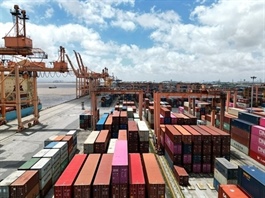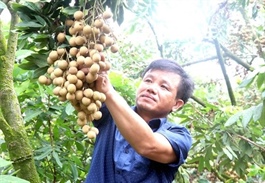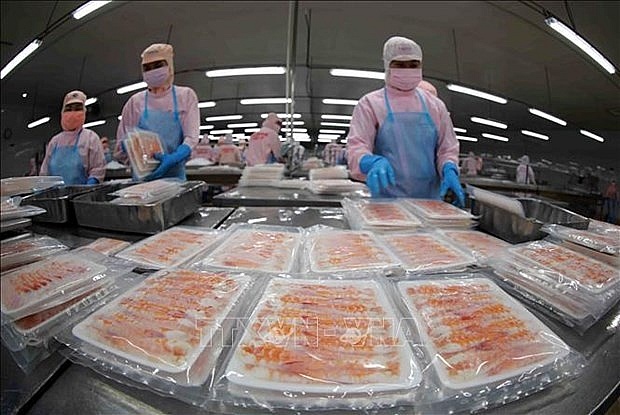Vietnam overtakes China to lead market share of textile-garment exports to US
Vietnam overtakes China to lead market share of textile-garment exports to US
Vietnam surpassed China to lead the market share of textile-garment exports to the U.S. during the first five months of this year, and also achieved the highest export growth for these items among the world’s top three exporters, the Vietnam National Textile and Garment Group (Vinatex) reported.

Employees work at a textile and garment enterprise in Ho Chi Minh City, southern Vietnam. Photo: Quang Dinh / Tuoi Tre |
Vietnam's textile-garment exports in the January-May period reached nearly US$16 billion, an increase of five percent year on year, of which $6 billion came from the U.S. market, a four-percent climb from a year earlier, according to Vinatex.
With such good performance, Vietnam has overtaken China to hold the largest market share of textile-garment exports to the U.S., and also gained the highest export growth among the world’s top three exporters of these commodities in the period, Vinatex general director Cao Huu Hieu said.
The other countries in the top three are China and Bangladesh, with the former seeing its total textile-garment export turnover stand at $66 billion in the January-May period, down two percent year on year, while the latter earned $21.7 billion, up 3.9 percent, according to Vinatex data.
However, Vinatex noted that Vietnam's growth has primarily stemmed from a shift of many orders from other countries to Vietnam and a five-percent depreciation of the Vietnamese dong against the U.S. dollar, rather than from increased global demand.
Most garment enterprises have secured orders for the third quarter of 2024 and are currently negotiating orders for the fourth quarter, which is the annual peak season for Christmas and New Year. However, current unit prices remain 20-50 percent lower than they were in 2019.
Meanwhile, the prices for textile orders from the main markets, such as China, Turkey, and South Korea, have approached the break-even level, so saving on production costs is necessary to ensure profit.
In general, the textile and garment picture has been brighter than in 2023, general director Hieu remarked.
Workforces at enterprises across the group have been maintained to timely fulfill orders from buyers, Hieu said, adding that employees have received income equal to that in 2023.
However, in facing fierce competition in the market, many textile enterprises, besides its traditional cotton fiber products, have had to flexibly convert to blended and recycled fiber products, which are not their strengths, to find new customers in niche markets.
At the same time, they are trying to seek new markets to mitigate dependence on traditional markets, while boosting new product research and development and renovating production technologies.
Hieu warned that in the second half of the year, textile and garment demand in major markets is not expected to improve.
Meanwhile, competing countries may devalue their currencies by 15-20 percent to gain a competitive edge.
So Vietnamese businesses will likely face intense price competition amid rising production costs, including increased shipping freight, electricity prices, bank interest rates, and other expenses.


























